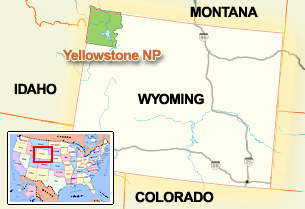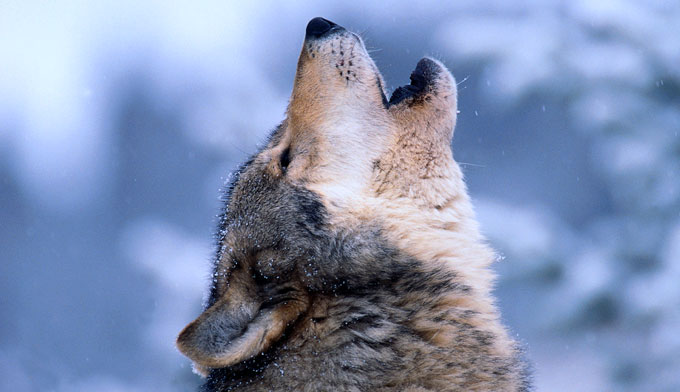Yellowstone: De-Extinction of an Ecosystem Success Story

(location of Yellowstone National Park)
(This is one of the most famous cases used to promote de-extinction and when you read it, it makes very good sense why that is so.)
In the early 20th century when a lot less was known about individual species importance in ecosystems, all of the wolves in Yellowstone were extirpated (killed off) out of fear and protection of livestock. Since, wolves are commonly found as apex predators (a species whom has no natural predators of their own) on food webs and are incredibly skilled carnivorous hunters; the extirpation was thought to be helpful and beneficial to humans. However, it did more harm then good.
The good news is we eventually found this out! We found out that wolves are very beneficial to us, because wolves were naturally engineered to keep Yellowstone’s ecosystem in tact.
With the elimination of all the wolves in 1926, populations of elk became critically high since the wolves were no longer habitants of the land. There became extremely large herds of elk that roamed the park and surrounding areas. This seemed good, since elk are herbivorous and do not attack humans (unless provoked or frightened in close encounters).
BUT, this abundance of elk led to the collapse of the tri-trophic cascade!!! OH my!!!! The tri-trophic cascade, is simply the theory that each cascade or level of the food pyramid is responsible for the organisms and ecosystem below it. In this case, wolves kept the population of elk balanced, because of this grass and herbivory could grow. After extirpating the wolves, the large numbers of elk had to feed themselves and due to this their food sources severely declined as their own population numbers increased rapidly. This overgrazing led to near local extinctions of several deciduous plant species, specifically aspen , cottonwoods, and willows. The species of willow and aspen were unable to successfully recruit young stems, since elk hallow out young stems for their food supply, and then the niche left vacant by wolves was inherited by coyotes, where this less skilled hunter and smaller animal could not keep the elk number down, but they did severely effect populations of other mammals such as foxes, rabbits and pronghorn. Therefore, with the elimination of wolves, there was complete imbalance in the ecosystem of Yellowstone. As a result, it saw population numbers of many species increase, leading to severe decrease of certain other species which led to endangerment and extinctions. Alright, we discovered that wolves are crucial to their ecosystem and thus much more beneficial to us there then not there. Remember when we used to play with toys in kindergarten, surely a teacher would say “you used it! you can put it back!” We knew better then to leave a mess after we did what we had to. This simple lesson carries over to science, we had some growing pains and angst and made a mess when we expanded to the terrific social structure we are today. We are attempting to clean up our milk spills, and that is precisely what we did in Yellowstone.
The “de-extinction” of the niche.
In 1995, William Ripple and Robert Beschta had a theory studying trophic cascades; they planned on reintroducing wolves back into Yellowstone to take over the niche of top predator to keep the elks in check and everything below on the food pyramid. After a very ingenious way of capturing the wolves from Canada and recreating pack structures, the packs were given land in Yellowstone.
The first cascade was complete and in order. 31 wolves in total were introduced to the park and within 8 years, that number had naturally increased to 98; this is essentially where the number has peaked, fluctuating between 50-100 ever since. Which shows even the wolf population is in check.
The second cascade, the elk had a major decrease in population, going from nearly 20,000 individuals to about 6,100 in 2010.
The third cascade of the tri-trophic cascade, the plants, more specifically the cottonwood, willows, and aspens have had much stronger numbers and healthier plants. For instance, the number of cottonwood trees taller than 5cm went from 0 to over 150 trees.
See, nature engineered wolves and thus ecosystems to naturally be in equilibrium. We are learning that and we too are naturally engineered to be in equilibrium with nature…
A suffering ecosystem out of balance was able to be restored be reviving the species, traits, and niches that belong there…
…now that is awesome.
How awesome?: Yellowstone’s Guide to Symbiosis


2 thoughts on “Yellowstone National Park”
Comments are closed.